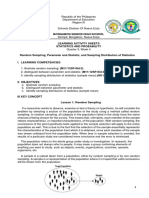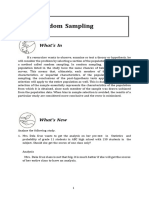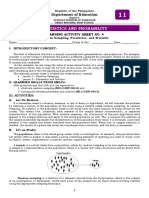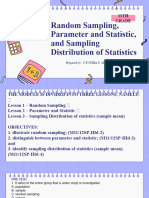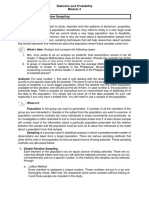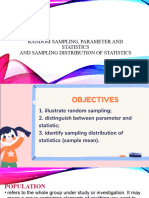0% found this document useful (0 votes)
3 views23 pages7 Random Sampling
The document outlines the concepts of sampling, including definitions of population, sample, parameter, and statistic, along with various random sampling techniques such as lottery, systematic, stratified, cluster, and multi-stage sampling. It explains the construction of sampling distributions of sample means and highlights the variability of sample means as random variables, leading to the concept of sampling error. Additionally, it provides examples and activities for applying these concepts in research scenarios.
Uploaded by
Yoohee SalamancaCopyright
© © All Rights Reserved
We take content rights seriously. If you suspect this is your content, claim it here.
Available Formats
Download as PPTX, PDF, TXT or read online on Scribd
0% found this document useful (0 votes)
3 views23 pages7 Random Sampling
The document outlines the concepts of sampling, including definitions of population, sample, parameter, and statistic, along with various random sampling techniques such as lottery, systematic, stratified, cluster, and multi-stage sampling. It explains the construction of sampling distributions of sample means and highlights the variability of sample means as random variables, leading to the concept of sampling error. Additionally, it provides examples and activities for applying these concepts in research scenarios.
Uploaded by
Yoohee SalamancaCopyright
© © All Rights Reserved
We take content rights seriously. If you suspect this is your content, claim it here.
Available Formats
Download as PPTX, PDF, TXT or read online on Scribd
/ 23




